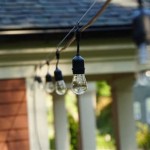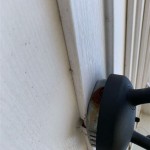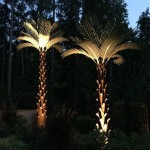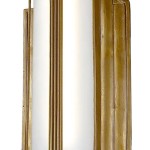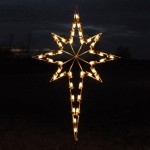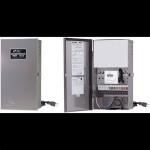The Comprehensive Guide to LED Outdoor Security Flood Lights
Outdoor security flood lights are a pivotal component in ensuring safety and security around residential, commercial, and industrial properties. Among the various lighting technologies available, LED (Light Emitting Diode) flood lights have emerged as the preferred choice due to their energy efficiency, longevity, and robust performance. This article provides a detailed examination of LED outdoor security flood lights, covering their key features, benefits, installation considerations, and best practices for optimal usage.
The purpose of outdoor security flood lighting is multifaceted. Primarily, it serves as a deterrent to potential intruders by illuminating vulnerable areas, making it more difficult for them to operate undetected. Additionally, flood lights enhance visibility, improving safety for residents, employees, and visitors navigating the property at night. They can also be integrated with security systems, such as motion sensors and cameras, to provide an early warning system and record suspicious activities.
Key Advantages of LED Technology in Security Flood Lights
LED technology offers several significant advantages over traditional lighting options, such as halogen or high-pressure sodium lamps, specifically in the context of outdoor security applications. These advantages contribute to lower operational costs, increased reliability, and enhanced security effectiveness.
Energy Efficiency: LEDs consume significantly less energy than traditional lighting technologies. This translates to lower electricity bills and reduced carbon footprint. The luminous efficacy (lumens per watt) of LEDs is considerably higher, meaning they produce more light output for the same amount of power consumed. For example, a typical LED flood light may use 20-50 watts to produce the same light output as a 100-watt halogen bulb, resulting in substantial energy savings over time.
Long Lifespan: LEDs have a significantly longer lifespan compared to traditional light sources. While a halogen bulb may last for 1,000-2,000 hours, an LED flood light can last for 25,000-50,000 hours or more. This extended lifespan reduces the frequency of replacements, minimizing maintenance costs and labor expenses, especially in hard-to-reach locations. The long lifespan also contributes to a more reliable security system, as the lights are less likely to fail unexpectedly.
Instant On/Off: Unlike some traditional light sources that require a warm-up period, LEDs offer instant on/off functionality. This is particularly important in security applications where immediate illumination is crucial for deterring intruders or capturing clear video footage. Motion-activated LED flood lights can instantly illuminate an area when triggered, providing an immediate deterrent effect and maximizing the chances of identifying potential threats.
Durability and Resistance to Environmental Factors: LEDs are solid-state devices, meaning they do not have fragile filaments or glass enclosures that can easily break. They are more resistant to vibrations, impacts, and temperature fluctuations than traditional lighting technologies. This makes them ideal for outdoor environments where they may be exposed to harsh weather conditions, such as rain, snow, and extreme temperatures. Many LED flood lights are designed with IP (Ingress Protection) ratings that indicate their level of protection against dust and water ingress, ensuring reliable performance in various weather conditions.
Color Temperature and Light Quality: LEDs offer a wide range of color temperatures, allowing users to choose the appropriate lighting for their specific needs. Cooler color temperatures (e.g., 5000K-6500K) provide bright, white light that enhances visibility and is often preferred for security applications. Warmer color temperatures (e.g., 2700K-3000K) provide a softer, more inviting light that may be suitable for residential areas where aesthetics are a concern. The color rendering index (CRI) of LEDs is also generally higher than that of traditional light sources, meaning they render colors more accurately, making it easier to identify objects and people in the illuminated area.
Selecting the Right LED Outdoor Security Flood Light
Choosing the appropriate LED outdoor security flood light requires careful consideration of several factors, including the intended application, the area to be illuminated, the desired light output, and the specific features required. A thorough assessment of these factors will ensure that the selected flood light meets the needs of the property and provides effective security lighting.
Lumens and Coverage Area: The lumen output of a flood light determines its brightness. The required lumen output depends on the size of the area to be illuminated and the desired level of brightness. For small residential areas, a flood light with 700-1300 lumens may be sufficient. Larger areas, such as parking lots or industrial sites, may require flood lights with 2000 lumens or more. The beam angle of the flood light also affects the coverage area. A wider beam angle will illuminate a larger area, while a narrower beam angle will provide more focused light.
Motion Sensor Integration: Motion-activated flood lights are a popular choice for security applications. These lights automatically turn on when motion is detected, providing immediate illumination and deterring potential intruders. Motion sensor range and sensitivity are important considerations. The sensor range should be sufficient to cover the area where motion detection is desired, and the sensitivity should be adjusted to minimize false triggers caused by pets or other non-threatening movements. Some motion sensors also offer adjustable on-time settings, allowing users to customize how long the light stays on after motion is detected.
Photocell (Day/Night Sensor): Photocell sensors automatically turn the flood light on at dusk and off at dawn. This feature eliminates the need for manual operation and ensures that the light is only on when it is needed. Photocell sensors can be particularly useful for areas where consistent lighting is required throughout the night, such as walkways or entrances.
IP Rating: The IP rating indicates the level of protection the flood light provides against dust and water ingress. For outdoor applications, an IP rating of IP65 or higher is recommended. IP65 provides protection against dust and water jets, while IP66 provides protection against powerful water jets. Higher IP ratings, such as IP67 or IP68, offer even greater protection against water immersion.
Housing Material and Construction: The housing material of the flood light should be durable and weather-resistant. Common materials include aluminum, polycarbonate, and stainless steel. Aluminum housings are lightweight and corrosion-resistant, while polycarbonate housings are impact-resistant. Stainless steel housings offer superior corrosion resistance and are often used in harsh environments. The construction of the flood light should also be robust to withstand vibrations, impacts, and extreme temperatures.
Warranty and Certifications: Check the warranty offered by the manufacturer. A longer warranty typically indicates a higher quality product. Look for certifications such as UL (Underwriters Laboratories) or ETL (Electrical Testing Laboratories), which demonstrate that the flood light has been tested and meets safety standards.
Installation and Best Practices
Proper installation and maintenance are crucial for ensuring the optimal performance and longevity of LED outdoor security flood lights. Following these guidelines will help maximize the effectiveness of the lighting system and minimize the risk of failures or malfunctions.
Professional Installation: While some homeowners may be tempted to install flood lights themselves, it is generally recommended to hire a qualified electrician. An electrician can ensure that the flood light is properly wired and grounded, minimizing the risk of electrical hazards. They can also assess the existing wiring and electrical load to ensure that the circuit can handle the additional load of the flood light.
Placement and Aiming: The placement and aiming of the flood light are critical for achieving optimal illumination and security coverage. The flood light should be positioned to illuminate key areas, such as entrances, walkways, vulnerable points of access, and areas where security cameras are installed. The flood light should be aimed downwards to minimize light trespass and glare, which can be annoying to neighbors and reduce visibility. Consider the use of shields or visors to further control the direction of the light.
Wiring and Connections: Ensure that all wiring and connections are properly insulated and protected from the elements. Use waterproof connectors and conduits to prevent water from entering the electrical system. Check the wiring regularly for signs of damage or corrosion, and replace any damaged components immediately. Proper grounding is essential for preventing electrical shocks and ensuring the safe operation of the flood light.
Maintenance: While LEDs require minimal maintenance compared to traditional light sources, it is still important to clean the lens of the flood light periodically to remove dust and debris that can reduce light output. Inspect the housing and mounting hardware for signs of damage or corrosion, and repair or replace any damaged components. Check the motion sensor and photocell sensors to ensure that they are functioning properly, and adjust the settings as needed.
Integration with Security Systems: Consider integrating the LED flood lights with other security systems, such as security cameras and alarm systems. Motion-activated flood lights can be used to trigger security cameras to start recording and alarm systems to send alerts. The combined effect of bright light, video surveillance, and audible alarms provides a strong deterrent to potential intruders.
By carefully selecting, installing, and maintaining LED outdoor security flood lights, property owners can significantly enhance the safety and security of their premises. The energy efficiency, long lifespan, and robust performance of LEDs make them an ideal choice for outdoor security lighting applications.

Envirolite Broe Integrated Led Outdoor Line Voltage Security Flood Light With Clear Glass Fl2024n40 48 The Home Depot

Commercial Electric 150w Equivalent Integrated Led Outdoor Security Flood Light 2000 Lumens Pwrf20 4k Bz The Home Depot

Home Zone Security White Motion Activated Outdoor Integrated Led Twin Head Dual Brightness Flood Light Es00929g The Depot

Series 8 50w Led Dimmable Outdoor Security Flood Light Fixture With 1 2 Threaded Knuckle Mount Ul Listed Ledwholers

Onforu 55w Led Security Flood Light Ip65 3 Adjustable Heads

Best Onforu 100w Outdoor Led Security Flood Light Bd62 For

Led Outdoor Flood Light Security 800 Lumens 3000k

27w Motion Sensor Led Security Lights Outdoor 3 Head White Waterproof Flood For Porch Yard Garage Not Solar Powered

Leonlite Motion Sensor Led Security Light Dusk To Dawn Outdoor Flood Lights Adjustable 2 Head Ip65 Waterproof 20w 150w Equiv 5000k Daylight Com

Awsens 3 Light Black Outdoor Integrated Led Security Flood Wall Or Eave Mount Aw5083 Bk The Home Depot

